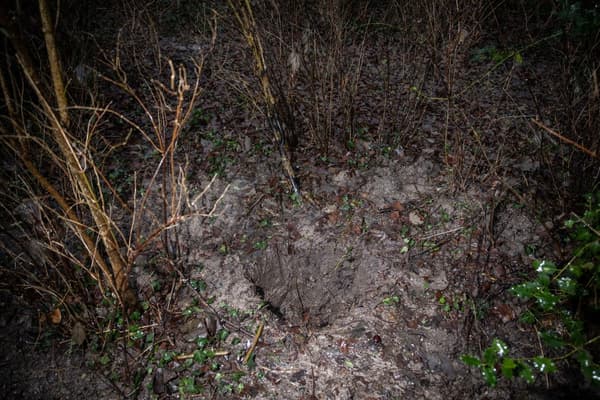A small red cross drawn on an old hand drawn map. This is enough for disturb, once again, the tranquility of the town of Ommeren, located in the eastern Netherlands. At the beginning of January, the disclosure of this map by the Dutch national archives relaunched a veritable treasure hunt in the small and generally quiet town.
“Several dozen people came to Ommeren especially to get their hands on this treasure,” Klaas Tammes, former mayor of Ommeren, told BFMTV.com.
The former councilor is also president of the foundation that owns the land where Nazi soldiers are said to have buried the famous loot during World War II.
According to testimonies contained in the archives, the German soldiers buried four ammunition boxes full of jewellery, precious stones, gold coins and music boxes. For a total value estimated at almost eleven million euros.
Metal detectors, watches, Da Vinci Code…
“All kinds of people came looking for” the supposed treasure, explains Klaas Tammes. “They dig everywhere. (…) At the beginning of the month (January), I met people with pieces of wood forked in the shape of a Y”, that is, a dowsing rod, an ancient tool that supposedly helps detect sources of groundwater, a medieval method that has never been scientifically proven.
“I even met a man who told me he had financial problems and that’s why he was looking for,” says the former mayor. “Another had developed a kind of Da Vinci Code on the map, and he was sure that the treasure was buried near the church.”
Others, again, are looking more seriously. Hoping to find a mountain of gold, treasure hunters come equipped with metal detectors. But to date, no one has gotten their hands on the famous treasure.

“Many people dig, sometimes deep,” continues the septuagenarian, who points out that “the municipality does not like all this very much, which since then has prohibited visitors from digging without prior authorization.”
“The police came at the beginning of the year to keep an eye on the gold hunters,” adds Klaas Tammes. “It has calmed down since then, there are a little less people. There are probably some who have already given up.”
It must be said that it is difficult to determine the exact place where the loot is supposed to be buried. “On the map you can see three poplars but they no longer exist. The landscape has changed a lot so people don’t know where to look.”
Official excavations in the coming weeks
Official excavations with archaeologists from the local museum should start in a few weeks, the 74-year-old mayor also announced. Upon receipt of permission to excavate. “It’s better that way: they are people who have experience, who know the terrain and the local history,” he says.
Until then, documents from the Dutch investigative services (CVO) reported at least three failed attempts to find the treasure in the spring of 1947 after the testimony of Helmut Sonder, a German soldier who was allegedly involved in the concealment of the treasure, reports AFP. .
Several scenarios can explain the failure of these excavations, according to the CVO: the treasure is only the fruit of the soldier’s imagination, although his testimony was considered reliable. The loot may also have been recovered by persons involved in its concealment or by CVO employees. Or it could have been recovered by US officials during a final search in 1947.
“Most likely, the treasure is still buried here, but it’s more likely that it was found and recovered in the past. But we really don’t know, we don’t have any evidence for that,” says Klaas Tammes.
Source: BFM TV

